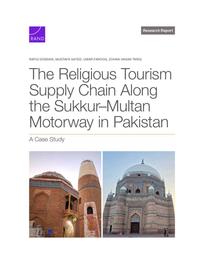The Religious Tourism Supply Chain Along the Sukkur–Multan Motorway in Pakistan
A Case Study
ResearchPublished Feb 26, 2025
The Sukkur–Multan motorway (M5) in Pakistan, which connects the city of Sukkur in northern Sindh with the city of Multan in southern Punjab, opened in 2019. In this report, the authors examine the private and social welfare effects of the M5 on the two cities’ religious tourism sectors. Using business and social performance indicators, they assess components of the religious tourism supply chain through interviews with regional service providers.
A Case Study
ResearchPublished Feb 26, 2025

The Sukkur–Multan motorway (M5) in Pakistan, which connects the city of Sukkur in northern Sindh with the city of Multan in southern Punjab, opened in 2019. In this report, the authors examine the private and social effects that the M5 has had on the two cities’ religious tourism sectors since its opening. Using key business performance indicators (KBPIs), the authors assess selected components of the religious tourism supply chain through in-person interviews with regional service providers. The authors then aggregated provider responses to infer key social performance indicators and compare them with national averages. Through this research, the authors seek to understand how new supply chains develop around a transport corridor and affect the value added at each node of the supply chain.
The authors found that positive private and social benefits resulted in both cities from the reshaping of the supply chain with the opening of the M5. Specifically, private benefits include an increase in access provided by the motorway, investments in online services, and specialization within the supply chain. The public benefits of the M5 include an improvement in the economic growth of the Sukkur and Multan districts relative to the country and an improvement in the economic growth of the poorer city, Sukkur, relative to that of Multan.
This research was sponsored by the RAND Center for Asia Pacific Policy and conducted within RAND International.
This publication is part of the RAND research report series. Research reports present research findings and objective analysis that address the challenges facing the public and private sectors. All RAND research reports undergo rigorous peer review to ensure high standards for research quality and objectivity.
This document and trademark(s) contained herein are protected by law. This representation of RAND intellectual property is provided for noncommercial use only. Unauthorized posting of this publication online is prohibited; linking directly to this product page is encouraged. Permission is required from RAND to reproduce, or reuse in another form, any of its research documents for commercial purposes. For information on reprint and reuse permissions, please visit www.rand.org/pubs/permissions.
RAND is a nonprofit institution that helps improve policy and decisionmaking through research and analysis. RAND's publications do not necessarily reflect the opinions of its research clients and sponsors.